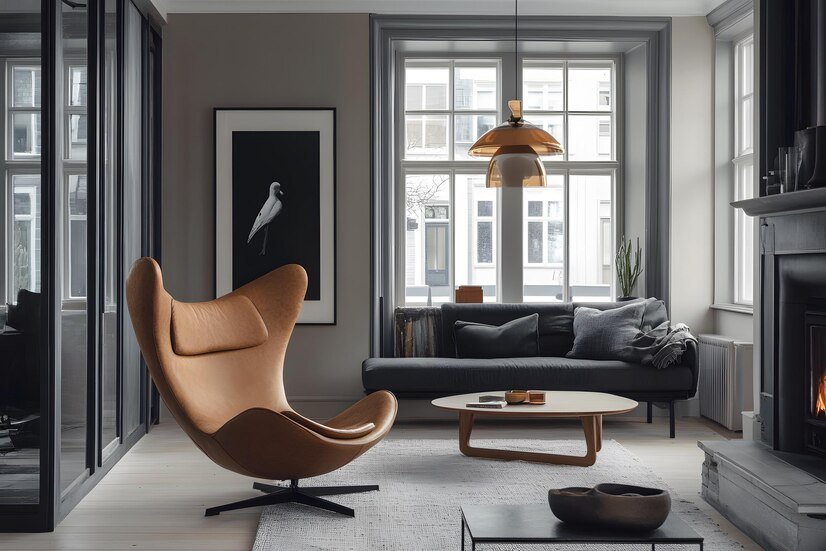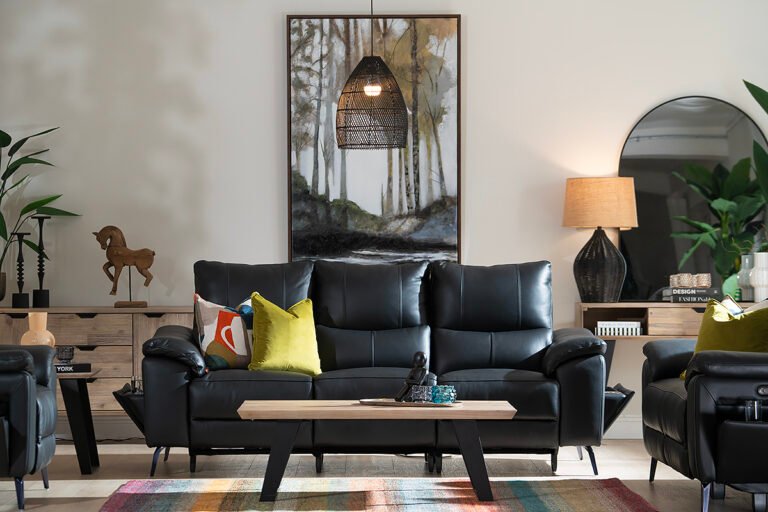Introduction to Scandinavian Interior Design
Scandinavian interior design has taken the world by storm, captivating those who crave simplicity and functionality in their living spaces. With its roots anchored in the Nordic countries, this design style embraces minimalism while celebrating warmth and comfort. Imagine walking into a room that feels effortlessly stylish yet inviting—a space where every element serves a purpose without sacrificing aesthetics. If you want to transform your home into a serene sanctuary inspired by Scandinavian principles, you’re in the right place. Let’s dive deeper into what makes this design irresistible and how you can achieve it in your own home!
The Principles of Scandinavian Design
At the heart of Scandinavian design lies simplicity. It emphasizes clean lines and functional forms. This approach creates spaces that feel open and uncluttered.
Functionality is paramount in this style. Each piece of furniture serves a purpose, blending beauty with usability. This commitment to practicality enhances everyday living.
Natural light plays a crucial role too. Large windows invite sunlight, creating warm, inviting environments. The focus on light fosters a sense of tranquility.
Sustainability also weaves through the principles of Scandinavian design. Using eco-friendly materials reflects an awareness of nature’s importance. Emphasizing organic shapes connects interiors to the natural world outside.
There’s an element of coziness known as “hygge.” Soft textures and inviting accents make spaces feel welcoming without sacrificing elegance or minimalism.
What is Scandinavian Interior Design?
Scandinavian interior design is a style that originated in the Nordic countries, characterized by simplicity and functionality. It aims to create spaces that are both beautiful and practical, embodying a minimalist approach.
This design philosophy embraces natural light and open spaces. Large windows are common, allowing sunlight to flood interiors. The layout often promotes flow between rooms.
Another hallmark of Scandinavian design is its emphasis on craftsmanship. Furniture pieces tend to be well-made, focusing on quality over quantity. You’ll find clean lines paired with organic shapes that enhance comfort.
Color plays a significant role as well. Neutral shades dominate the palette, offering a calming backdrop for various textures and materials. This creates an inviting atmosphere without overwhelming the senses.
Sustainability also influences this aesthetic, with many designers prioritizing eco-friendly materials and processes in their work.
The Key Elements of Scandinavian Design
Scandinavian design is celebrated for its simplicity and functionality. At its core, it embraces minimalism while ensuring every piece serves a purpose.
Light plays a crucial role. Large windows invite natural light, creating bright and airy spaces. This connection to nature enhances the overall ambiance.
Furniture often features clean lines with an emphasis on comfort. Look for pieces that blend style with practicality—think sleek sofas paired with cozy throws.
Wood is another key element; it brings warmth and texture into homes. Light woods like pine or ash are commonly used, giving interiors an inviting feel.
Plants are essential in Scandinavian design. They add life and color without overwhelming the serene aesthetic, bridging the gap between indoors and outdoors seamlessly.
How to Incorporate Minimalism into Your Space
Embracing minimalism in your space starts with decluttering. Remove items that no longer serve a purpose or bring you joy. This creates a cleaner, more open environment.
Next, focus on multifunctional furniture. Look for pieces like ottomans with storage or tables that can expand for gatherings. This helps maintain a tidy aesthetic while being practical.
Consider the layout of your room as well. Arrange furniture to create fluidity and openness. Avoid overcrowding spaces; give each item room to breathe.
Incorporate negative space intentionally, allowing areas to feel spacious rather than filled to the brim.
Select decorative elements carefully. Choose a few impactful pieces instead of many smaller ones—this draws attention and enhances simplicity without overwhelming the eye.
Choosing a Neutral Color Palette
Choosing a neutral color palette is essential for achieving Scandinavian interior design. This approach creates a serene and inviting atmosphere.
Start with shades of white, beige, or gray as your base. These colors reflect light beautifully and can make spaces feel larger. They serve as the perfect backdrop for your furniture and decor.
Consider adding soft pastels or muted tones to complement the neutrals. Subtle blues or gentle greens can introduce a touch of color without overpowering the space.
Textures play an important role too. Mix matte finishes with glossy surfaces to create depth while keeping it cohesive.
Don’t forget about natural wood tones! Incorporating wooden elements adds warmth and connects your design to nature, enhancing that cozy Scandinavian vibe you’re after.
Adding Natural Textures and Materials
Incorporating natural textures and materials is essential for achieving Scandinavian interior design. Think about the warmth of wood, stone, and textiles that create a harmonious environment.
Wooden elements can be introduced through furniture or flooring. Light woods like birch and pine are popular choices, lending an airy feel to your space.
Stone accents bring a sense of nature indoors. Consider using marble for countertops or slate in decorative elements to add sophistication.
Textiles play a significant role too. Use wool throws, linen cushions, and cotton rugs to enhance comfort while adding depth to your decor.
When selecting materials, aim for authenticity and simplicity. This not only reflects the Scandinavian ethos but also creates a calming atmosphere where you can truly unwind. Embrace imperfections; they often tell a story that enhances the charm of your home.
Tips for Creating a Cozy and Functional Space
Creating a cozy and functional space is all about balance. Start by choosing furniture that is both comfortable and versatile. Look for pieces that can serve multiple purposes, like ottomans with storage or extendable dining tables.
Layering textures adds warmth to your room. Incorporate plush rugs, soft throws, and decorative cushions in various materials to create an inviting atmosphere. Mixing textures helps achieve that Scandinavian feel without sacrificing comfort.
Lighting plays a crucial role too. Opt for warm light sources instead of harsh fluorescents. Table lamps with soft shades or string lights can enhance the coziness while providing essential illumination.
Don’t forget about plants! Bringing greenery indoors not only purifies the air but also adds life to your space. Choose low-maintenance varieties if you’re short on time or experience.
Ensure everything has its place; organized spaces promote functionality while keeping visual clutter at bay.
Bringing in Scandinavian-Inspired Decor and Accessories
To truly embrace Scandinavian interior design, incorporating decor and accessories is essential. Look for pieces that reflect simplicity and functionality, key tenets of this style.
Think about selecting artwork that features nature or minimalistic forms. Black-and-white photography can create a striking focal point without overwhelming your space.
Textiles also play a significant role. Soft throws in natural fabrics add warmth while maintaining the clean aesthetic typical of Scandinavian homes.
Consider functional items as decor too—think stylish wooden bowls or sleek shelving units that display your curated collection without cluttering the room.
Don’t shy away from greenery either! Plants bring life into any room and complement the organic materials favored in this design approach.
Carefully chosen accessories elevate your space while keeping it true to its roots: uncomplicated yet inviting.
Mistakes to Avoid When Trying to Achieve Scandinavian Design
When diving into Scandinavian interior design, it’s easy to make missteps. One common mistake is overcomplicating your space. Remember, simplicity is key. Stick with clean lines and avoid clutter.
Another pitfall is neglecting functionality. Scandinavian design emphasizes practicality alongside aesthetics. Every piece should serve a purpose; don’t fill a room just for decoration’s sake.
Color choices can also trip you up. Overly vibrant hues stray from the neutral palettes characteristic of this style. Instead, focus on whites, grays, and soft earth tones to maintain that serene vibe.
Overlooking natural materials can diminish authenticity in your space. Incorporate wood, stone, or textiles like linen for an organic touch that breathes life into your home without overwhelming it.
A Look at Real-Life Examples of Scandinavian Interiors
Scandinavian interior design thrives in real-life settings that embody its principles. Picture a cozy living room where light floods through expansive windows, illuminating soft textiles and natural wood accents.
In one striking example, a minimalist kitchen showcases sleek cabinetry paired with open shelves displaying artisanal ceramics. The neutral palette harmonizes perfectly with touches of greenery from potted herbs on the windowsill.
Another inspiring space features an inviting reading nook adorned with plush cushions and a simple yet elegant wooden chair. Natural light creates a serene atmosphere perfect for unwinding.
A family home may boast an airy dining area with a large wooden table surrounded by mismatched chairs, celebrating individuality without sacrificing cohesion.
These spaces reflect functionality and warmth, proving that Scandinavian interiors are not just stylish but also deeply livable. Each element tells a story while adhering to the timeless aesthetic that defines this beloved design movement.
Conclusion
Scandinavian interior design offers a beautiful blend of simplicity, functionality, and warmth. By embracing its core principles and incorporating key elements like minimalism, neutral colors, and natural textures, you can transform your space into a serene sanctuary.
Pay attention to the details by choosing decor that aligns with Scandinavian aesthetics while ensuring comfort is at the forefront. Avoid common pitfalls that could detract from the harmonious feel you’re striving for.
As you explore various real-life examples of Scandinavian interiors, you’ll find inspiration to craft your unique version of this timeless style. Embracing these concepts will not only enhance your home’s aesthetic but also create an inviting atmosphere where you can truly relax and unwind.








